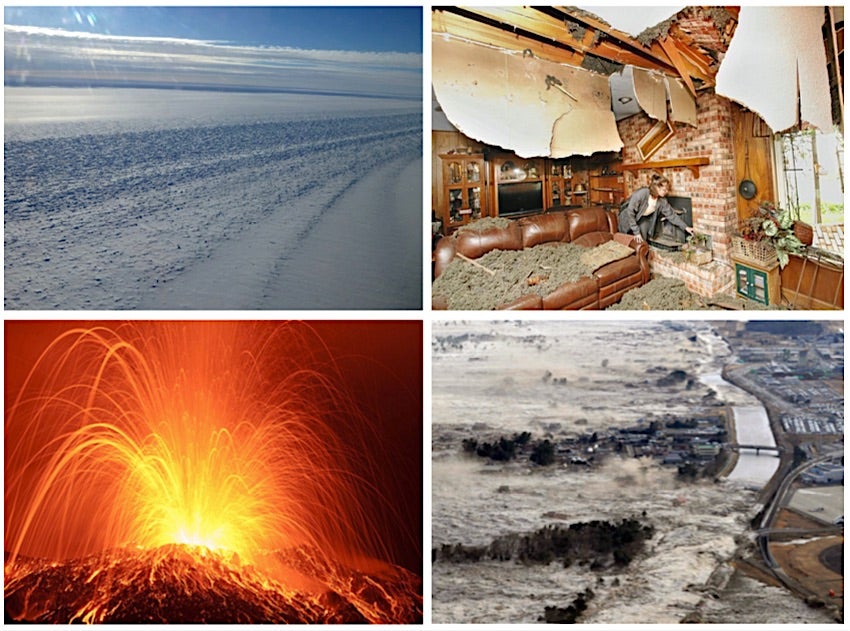The Role of Multiphase Instabilities in Nature’s Extremes
How fast can ice sheets disintegrate? When do induced earthquakes pose unacceptable risk? Why do volcanoes erupt? And how can we limit the destructive reach of tsunamis? The common denominator of what at first glance might seem like disparate systems is multiphase flow. The dynamic interactions between multiple solid and fluid phases − such as ice and meltwater, rock and wastewater, magmatic mush and gas, sediment and water − give rise to drastic nonlinearities that govern abrupt change. This talk explores the role of multiphase instabilities in the onset and evolution of extreme events for different natural settings including Antarctica, induced seismicity, basaltic volcanoes, and tsunami runup. I focus specifically on why it is beneficial to study these problems within a common multiphase and multiscale framework.
Technical Talk: What Drives Eruptions at Persistently Degassing Volcanoes?
Many active volcanoes erupt significantly less magma than they degas, implying that large quantities of magma must descend back into the plumbing system after degassing. The resulting bidirectional flow field in the volcanic conduit is fundamentally unstable. These instabilities are important to understand, because they could contribute to the episodicity of eruptive behavior observed at persistently degassing volcanoes. Laboratory experiments have provided invaluable insights into the flow regimes that may arise in bidirectional flow, but are not straightforward to scale up to volcanic systems. In this talk, I use specifically designed numerical and analytical model to generalize existing laboratory experiments and better understand their applicability in the volcanic context. Our analysis suggests that even at steady state, flow can occur in two different core-annular configurations, both of which have been observed in laboratory experiments. We further find that dynamic switching between these solutions depends on the boundary conditions of the model domain, which implies that conduit flow not only governs eruptions but that eruptions may also control shifts in conduit flow. By introducing individual crystals and bubbles into our bubbles, we derive testable field implications of our model. We suggest that volatile-contents in melt-inclusions and the crystal arrangement in glomerocrysts could be observational signatures of the flow behavior we posit.
Figure showing examples of the type of extreme events we study (from top left to bottom right): Surface crevassing along a shear margin on the Ronne Ice Shelf (Maria-Jose Vinas, NASA DC-8), the damage created by an induced earthquake in Oklahoma (Jim Beckel, The Oklahoman), a typical eruption of Stromboli volcano in Italy (Tom Pfeiffer, Volcano Discovery), and the Japan tsunami washing onshore (AP Images).
